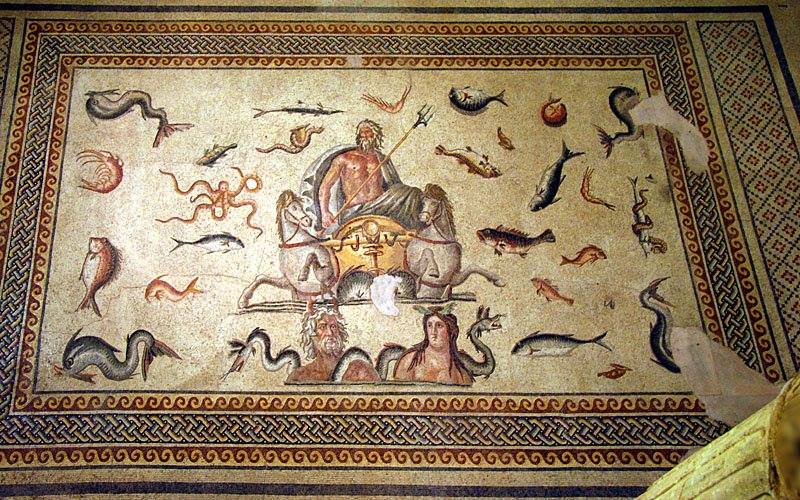Book 8 is the central book of Metamorphoses, and perhaps not entirely by chance contains Ovid's memorable description of the labyrinth of Crete. We'll look at that description in more detail in a later post, but for now, it's worth noting that in order for something to be a labyrinth, it must have a center. Mazes can offer a confusing multiplicity of paths, but labyrinths should have one route, however intricate, leading from outside to center:
 |
| Cretan Labyrinth |
Websters Online has quite a lavish page about the word "labyrinth," including this brief definition:
The term labyrinth is often used interchangeably with maze, but modern scholars of the subject use a stricter definition. For them, a maze is a tour puzzle in the form of a complex branching passage with choices of path and direction; while a single-path (unicursal) labyrinth has only a single Eulerian path to the center.
As my son Sawyer noted, when you actually trace the route of a labyrinth like the one above, you in fact traverse every inch of it.
For more about the distinction between mazes and labyrinths, and about the history and types of labyrinths, see Labyrinthos.
Another brief overview that sorts the three basic designs into Cretan, Roman, and Medieval, can be found here.
The labyrinth of Chartres Cathedral is one of the glories of Medieval design:
A very detailed and generously illustrated history of labyrinths and mazes from Egypt to recent times by Roberta Barresi can be found on multiple pages beginning here. As Barresi finds, the labyrinth took on different kinds of meanings and uses in different cultural epochs. More on that here as well.
For more about the distinction between mazes and labyrinths, and about the history and types of labyrinths, see Labyrinthos.
Another brief overview that sorts the three basic designs into Cretan, Roman, and Medieval, can be found here.
The labyrinth of Chartres Cathedral is one of the glories of Medieval design:
 |
| Chartres |
A very detailed and generously illustrated history of labyrinths and mazes from Egypt to recent times by Roberta Barresi can be found on multiple pages beginning here. As Barresi finds, the labyrinth took on different kinds of meanings and uses in different cultural epochs. More on that here as well.
 |
| Italian image of Roman Labyrinth |


No comments:
Post a Comment